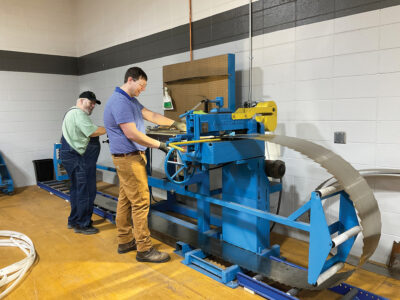By the time this column is published, we will be catching our breath after one of the most challenging and tumultuous years in recent history, which included a consequential election season. The control of the U.S. Senate will be decided on January 5 when the state of Georgia holds a run-off election for its two Senate seats. The implications of the election for our industry may depend on whether the legislative and administrative branches of government are controlled by one party or are divided. Regardless of the outcome, from spending bills to carbon and climate legislation, the American Wood Council (AWC) is closely monitoring and will be working with the incoming Administration and Congress to determine how it will shape policies affecting our industry.
The 117th Congress begins this month, which means all legislation must be re-introduced. For example, the Trillion Trees Act was introduced last year and, in part, encouraged the use of sustainable building materials in reducing greenhouse gas emissions. AWC supported the Trillion Trees Act, but that bill and any others introduced over the last two years will have to be re-introduced under the new Congress and given a new bill number.
In preparation for the possibility of a more robust push for federal legislation or regulation on carbon emissions, AWC has been coordinating closely with our members to finalize working principles for our industry on climate change and carbon that will serve as the guideposts for our advocacy. Our goal is to ensure AWC assumes a leading voice on climate change and discussions around carbon, which almost certainly will have significant implications for our industry.
Sustainability concerns are one of the chief drivers of the rise in wood use, highlighted by the growth we are seeing in mass timber, which provides a climate-friendly replacement for carbon-intensive, alternative materials that have traditionally been used for taller buildings. The construction industry is rapidly shifting to focus more on creating a sustainable built environment, and wood has unique sustainability properties that set it apart. Namely, wood both emits less carbon through its product life cycle than competing materials and it sequesters carbon embedded in the wood for the life of the building. It is also renewable, locally and responsibly sourced, and supports rural communities dependent on good, high paying jobs. Thanks to these many attributes, we are seeing much more widespread recognition of wood’s overall performance as a proven, resilient, climate-friendly alternative for improved sustainability and use. This is going to be an exciting area for the wood products industry, as we have such a positive story to tell and I believe we’ll have many good opportunities to be proactive in the legislative and regulatory arenas.
In order to ensure that the sustainability of wood products is fully recognized, AWC member companies have agreed to increase the frequency of environmental and energy surveys to once a year. Later in 2021, we plan to launch a website where mills can enter data for their operations in a secure environment. The increased data collection schedule and the simplified user experience will ensure robust data is collected for the industry’s Environmental Product Declarations (EPDs), which are used by designers in choosing sustainable building materials. The industry-wide EPDs also serve as an excellent proof point when discussing wood products’ sustainability story on Capitol Hill and with federal regulators in the new Biden Administration.
This year presents a critical time for the wood products industry to remain united and work together on important policy issues like these and many others. I feel strongly that the structural wood products industry is poised for growth, given its excellent sustainability profile and the new markets made available through the tall wood building movement. AWC staff will be working hard to ensure the new Administration and Congress recognizes the potential for wood products to play an essential role in the carbon solution. In the face of challenges from environmental regulation, competing materials and more, AWC is poised to take a lead role in working with our partners to ensure the fair, balanced policies that will guarantee a strong future for the wood products industry.
To learn more about the American Wood Council, visit www.awc.org.









